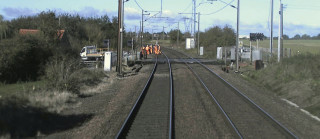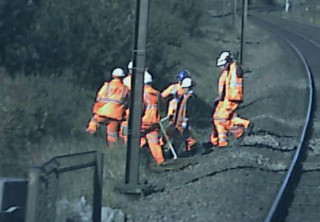Simon French is the public official tasked with investigating accidents and, more often, near misses on the railways. Thankfully, train crashes and derailments are rare events. But incidents of trains narrowly missing gangs of workers tasked with track maintenance remain prevalent. It is French’s job, as chief inspector of the Department for Transport’s Rail Accident Investigation Branch (RAIB), to find the causes and publish his findings.
He is eminently qualified for the task, having worked in British Rail operations for six years, followed by 10 years working on design and operational safety for projects including the Channel Tunnel, Heathrow Express and Denmark’s Great Belt Tunnel. He was then head of operations and safety on the Channel Tunnel Rail Link (now known as HS1). He joined the RAIB in 2004 and has been chief inspector since 2015.
He is clearly a frustrated man.
“I am concerned that, despite much effort and many initiatives, we are not seeing the hoped-for improvements in safety for track workers,” he wrote in a recent report. “It’s time that the industry thought long and hard about the way it provides critical safety information to its staff and contractors.”
The RAIB began life in October 2005 as the independent body for investigating accidents and incidents on mainline railways, metros, tramways and heritage railways throughout the UK. It was set up on the recommendation of Lord Cullen’s inquiry report on the Ladbroke Grove rail accident in 1999. It has a staff of 43 inspectors with either a professional railway or investigation background, working out of operational centres in Derby and Farnborough.
Unlike the Health & Safety Executive, it has no powers to police or prosecute. Nor is it meant to attribute culpability, although recent reports do not shy from pointing the finger.
French’s cry of despair at lack of progress on worker safety came in his December 2018 report into a near-miss in the London area. A group of track workers had to jump for their lives to avoid being struck by a speeding train at South Hampstead in the early hours of 11th March 2018.
Not everyone is so lucky; on 6th November 2018, again in the early hours, a rail worker was killed when he was struck by a train at Stoats Nest Junction, between Purley and Coulsdon South stations on the main line from London to Brighton. The investigation into that incident is continuing at the time of writing, but there are plenty of other RAIB reports that flag up key issues that remain inadequately addressed by the industry.
The RAIB report into the March 2018 South Hampstead incident recommended that, among other measures, Network Rail must ensure clarity as to who is in charge in any group of workers and ensure that they know what their responsibilities are. But it was not the first time that French had had to tell Network Rail this.
At the South Hampstead incident, some of the workers were employed by MJ Quinn, others by staffing agency Premier People Recruitment. The incident occurred because the track workers had placed the trolleys on a line that was still open to train movements instead of on the intended line which was blocked.
Safety arrangements that had been established were ineffective. The work group did not have anyone designated as the ‘person in charge’, an individual who has sufficient knowledge and competence, and is specifically appointed to manage all the risks associated with the work, including the danger from moving trains.
Forward-facing CCTV image from a train shows the sequence of a near miss with a group of track workers at Egmanton level crossing in Nottinghamshire, 5th October 2017
French said: “The recent tragic death of a track worker on the Brighton main line at Stoats Nest Junction is a stark reminder of the risk of working on the railway tracks. Prior to this accident, it had been nearly five years since a track worker was struck and killed by a train. However, in that time there have been too many near misses, such as this one at South Hampstead, in which people have had to jump for their lives at the last moment. In the case of the near miss at Egmanton in October 2017, a multi-fatality accident was only avoided with two seconds to spare.
“The number and type of near misses in recent years is hugely disappointing given the efforts made to address track worker safety during that time. Every near miss, however caused, should be viewed as a failure of the system to deliver safety.
“Over the same period, Network Rail has introduced a number of changes to procedures, and several new initiatives, to try to reduce the risk. One of these reintroduced the concept that there should be a ‘person in charge’. This was intended to make an identifiable and capable person responsible for all aspects of the planning and delivery of safe work, for each job. It is disappointing that our investigation found that the way in which this concept had been implemented lacked clarity, and the result of this was confusion on site.
“As well as this organisational issue, we found that staff were disorientated, and did not know which line was which. This could have been readily solved if they had had proper diagrams, and if clear signs had been provided at the point where they entered the railway. RAIB has raised this issue before – it’s time that the industry thought long and hard about the way it provides critical safety information to its staff and contractors. As I once discovered in my early career, it is all too easy to become disorientated on railway infrastructure, particularly at night.
“I am concerned that, despite much effort and many initiatives, we are not seeing the hoped-for improvements in safety for track workers. Despite all the efforts that the industry has made, this kind of alarming incident is still happening – in the last two years we have published three investigation reports and four safety digests covering narrowly avoided collisions between trains and track workers. Our class investigation into the safety of track workers, published last year, took data from over 70 incidents which happened in a single year.
“In this report we make six recommendations, all aimed at improving the safety of people who have to work on or near the line. There needs to be complete clarity about who is in charge, where the work is to take place, and which lines are open to traffic. I hope that the railway industry will do what’s necessary to ensure that track workers properly understand the track safety processes and the roles of everybody involved in their implementation.”
The Egmanton report, referenced above, is also a powerful document. A group of track workers were nearly hit by a speeding train at a level crossing in Nottinghamshire on 5th October 2017. The person in charge (PiC) was a very experienced, highly qualified Network Rail employee leading the Retford track maintenance team. The track workers were supplied under a zero-hour contract arrangement by Vital Human Resources Ltd, a subsidiary of Morson Group.
The RAIB report found that: “Although the PiC was qualified, experienced and was deemed competent by his employer, neither his training nor reassessments had instilled in him an adequate regard for safety and the importance of following the rules and procedures. Additionally, none of the team involved challenged the unsafe system of work that was in place at the time. Even though some were uncomfortable with it, they feared they might lose the work as contractors if they challenged the PiC.”
In other words, the PiC was a human being and humans are fallible creatures. His fallibility remained unchecked and unchallenged by other members of the workforce who felt they lacked the authority to speak up and voice their concerns.
On publishing his findings into this incident, French said: “When the person in charge of a team is both a strong personality and an employee of the client, it can be particularly hard for contract workers to challenge unsafe behaviour.

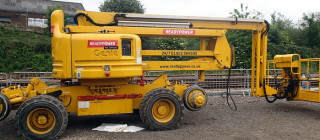
“In this investigation, RAIB found that the person in charge had adopted an unsafe method of working in an attempt to undertake additional unplanned work. Both the person in charge and team members became distracted, and the result was that three of them found themselves jumping clear of a train travelling at 125 miles per hour with just one second to spare. This came so close to being a major tragedy.
“We have seen this sort of unsafe behaviour before, where the wish to get the work done quickly overrides common sense and self-preservation. When we see narrowly avoided tragedies of this type it is almost always the result of the adoption of an unsafe method of work and the absence of a challenge from others in the group. We are therefore recommending that Network Rail looks again at how it monitors and manages the safety leadership exercised by its staff, and how they interact with contractors. There have been too many near misses in recent years. It takes effective leadership and a positive safety culture to create a working environment in which everyone can be confident that safety will come first.”
But when it comes to safety on the railways, it is not just the performance of the people on site that is integral to safety; the entire supply chain has the ability to affect outcomes.
An example of this was provided by the RAIB’s report, published in March 2019, into an incident in June 2018 when a road-rail vehicle ran out of control in Bradford. The causes were found to be a combination of on-site error, namely faulty deployment of the rail wheels, and supply chain failings – poor maintenance of the rail wheel braking system. An underlying factor was that the industry’s competence management system for machine operators focuses on the renewal of qualifications, rather than demonstrating ongoing competence.
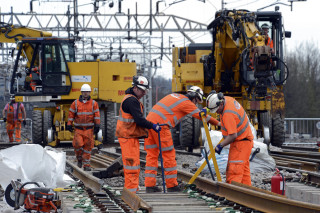
Of this incident, French said: “Getting road-rail plant safely on and off the track ought to be a straightforward business. Unfortunately, over the years RAIB has had to investigate too many incidents in which this operation has gone wrong, and the machine involved has run away downhill, often for quite long distances. Too often the people in charge have not known what to do to stop the runaway. In this case, the machine operator’s actions were not in line with what he had been trained to do, and no-one had checked on him. Of greater concern, however, is that the machine’s brakes did not hold it stationary on the 1-in-46 gradient. This was because they were badly maintained, a state of affairs that can be traced back to poor instructions and inadequate supervision of the plant hire company’s maintenance staff.
“The management of safety in the rail plant industry is something that RAIB has expressed concern about before. In the past, one of the important issues has been the competence of machine operators and maintainers. In this case, the problems were not only at the plant hire company. The project to convert many road-rail vehicles to direct rail wheel braking also lacked important elements of safety assurance, such as provision for proper information about the machines being converted, and adequate arrangements for training the people who would have to maintain the new braking systems.
“This incident provides an opportunity for the industry to learn major lessons from a relatively minor event. Our recommendations are directed to Network Rail and one other company, but I hope that people in all areas of the rail plant sector will take note of the learning points in this report, and make sure that their company safety management systems are comprehensive and fully implemented.”
A frustration for the RAIB is that its powers do not extend beyond investigating incidents and producing reports. What happens next is all in the hands of others, including the Office of Rail & Road (ORR), the industry regulator. ORR has prosecuted Network Rail contractors for safety breaches in recent years, as Kier, Balfour Beatty and BAM Nuttall have found to their cost. But it has only prosecuted where people have been hurt or killed; it has yet to take any action for safety failings resulting in a near miss. This is in contrast to the Health & Safety Executive, which is known to prosecute for safety breaches regardless of injuries. The ORR is clearly out of step here.
A spokesman for the RAIB said: “The Office of Rail & Road, as the safety authority, has responsibility for monitoring progress against our recommendations. We then report on the progress and whether we believe the intention of our recommendations have been met in our annual reports.” The next RAIB annual report is due this month. It should make interesting reading.
A Network Rail spokesperson said: “Huge strides have been made in railway safety over recent years, resulting in safety incidents, measured by the lost time incident frequency rate, reaching their lowest ever levels. Britain enjoys an enviable safety record that is second to none across Europe, but that record has been hard-won through focus and action.
“That some accidents and near misses continue to occur serves as a reminder that there is no room for complacency. We continue to work closely with industry partners, including the Rail Accident Investigation Branch, to further improve safety on the railway for our staff and contractors.”
Alasdair Reisner, chief executive of the Civil Engineering Contractors Association, says that any lack of progress identified by the RAIB is not for want of trying across the industry.
“I never go to a meeting with Network Rail where health & safety is not on the agenda,” he says. “All of the industry has done a huge amount to improve safety. It is vital to understand what is going wrong. It is not for lack of effort. It is not good enough to say that it’s a large organisation with complex assets. We need to understand it better.”
The inherent difficulties in managing safety on the railways are myriad – including a lot of night working and a fragmented labour force. On a civil construction site, when mistakes happen the result is more often an injury than a fatality. On the railways, the downside risk is more severe. Speeding trains tend not to hurt; they just kill.
Reisner draws a comparison between the energy sector – oil, gas, nuclear – and the railways. In the energy sector, safety is far more obsessively ingrained, he suggests. But then their workforce tends to be less widely dispersed and more stable. “The rail industry will always need a contingent labour supply because of the peaks and troughs of workload,” Reisner says.
Thus the crusade for safer working on the railways continues.
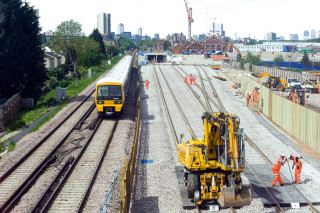
Front-line decision-making investigated
Many of the incidents that the Rail Accident Investigation Branch investigates are the result of simple human error – front-line workers making bad decisions with no mechanism in place to raise the alarm. Often mistakes occur without any incident or near-miss occurring so there is no RAIB investigation. However, the RAIB is aware of “the vulnerable nature of such decision-making”, it says.
For this reason it launched a class investigation in January into the factors affecting those decisions.
“Fundamental to the investigation is the recognition that such decisions are never taken in isolation, but may be influenced by a variety of factors associated with the person, the task, the equipment, the environment or the organisation,” it says. “The purpose of the class investigation is to identify these factors and to determine what actions may be appropriate to address them. As well as aiming to improve safety, this investigation will also inform the RAIB’s own work when dealing with such incidents in future.”
This article was first published in the May 2019 issue of The Construction Index magazine
UK readers can have their own copy of the magazine, in real paper, posted through their letterbox each month by taking out an annual subscription for just £50 a year. Click for details.
Got a story? Email news@theconstructionindex.co.uk

